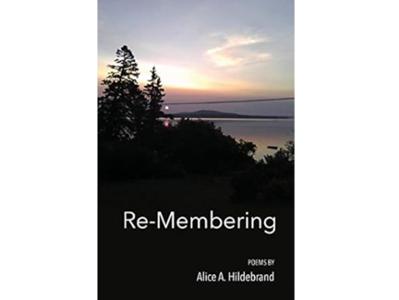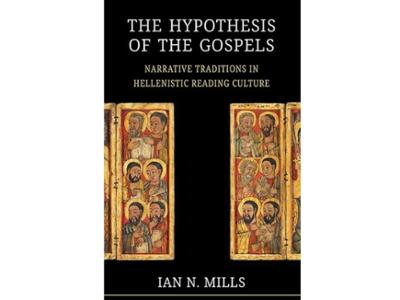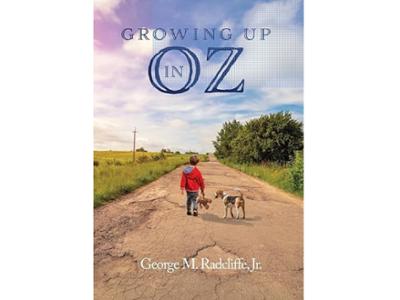Bookshelf
Alumni and faculty members who would like to have their books considered for this listing should contact Stacey Himmelberger, editor of Hamilton magazine. This list, which dates back to 2018, is updated periodically with books appearing alphabetically on the date of entry.
-
(Routledge, 2025).
Along with co-editors Don Waldman of Colgate University and Qi Ge ’06, Jensen’s former student and now an associate professor of economics at Vassar College, this latest edition of the book first published in 1998 is described by the publisher as blending “a rigorous theoretical introduction to industrial organization with empirical evidence, real-world applications, and case studies.” This, along with the range of theoretical and applied problems and exercises it provides, makes it “one of the leading undergraduate texts on industrial organization,” according to the description.
Topic -
(Palmetto Publishing, 2025).
In this inspiring novel, the author shares the story of a young boy coping in the aftermath of domestic violence, loss, abandonment, and bullying. Just as his path seems headed toward one of self-destruction, he meets an elderly neighbor — a man who offers compassion and guidance all the while dealing with demons of his own. The two form an unlikely friendship that transcends generations and racial differences, ultimately changing both of their lives for the better.
Topic -
(Conquering Books, 2005).
According to its published description, this book “delves into the enduring impact of slavery on African Americans. It argues that post traumatic slavery disorder is akin to post traumatic stress disorder, and profoundly affects the African American community, manifesting in issues such as substance abuse, broken families, crime, and low educational attainment. By tracing the roots of contemporary dysfunctional behaviors to the era of slavery, the authors shed light on the persistent psychological scars inherited by descendants of slaves. The book emphasizes the urgent need to understand and address these historical traumas to foster healing and empowerment within the Black community.”
Topic -
(Finishing Line Press, 2022).
Perhaps the best description of this chapbook comes from fellow poet Stuart Kestenbaum ’73: “Re-membering is a courageous and evocative book. Alice Hildebrand examines the complicated and profound bonds of mother and daughter, through what she calls in one poem the ‘undoing of her mother’s life.’ She skillfully intertwines her multiple roles of daughter, caregiver, and mourner throughout these poems, and we come to see how love evolves, becoming what it needs to be. She takes us on a spiritual journey that transforms her and us as well.”
Topic -
(Little Cottage Press, 2024).
Here’s a summary from the publisher to get you hooked: “When Mary Jane Bennett is found dead in her bed — alone, strangled by her own scarf, and with every door in the house locked — the medical examiner rules her death accidental, the result of a sex game gone horribly awry. State police decline to investigate further, but Queensbridge Police Chief Caleb Crane doesn’t buy for a minute that his good friend died this way, so he undertakes his own investigation. Facing town councilors afraid of bad publicity, an angry medical examiner, and his own personal demons, he labors to solve what he believes is the first-ever murder in his pastoral Berkshire Hills village. Complicating things: the list of suspects includes some of the people to whom he is closest — including his own wife.”
Topic -
(Fortress Press, 2025).
According to the publisher: “The gospels were not the only books in antiquity to retell the same story. Ancient readers had their own language for describing works that retread the same narrative ground. Different versions of a story were imagined as sharing a narrative core, called a hypothesis. Early Christian readers adopted this conceptual model in order to describe gospel literature, legitimize its pluriformity, and limit its diversity. Even before the term ‘hypothesis’ appeared explicitly, however, readers imagined gospels in roughly the same way. Christians did not radically reimagine the literary character of gospels at the end of the second century, when hypothesis language first appeared. Rather, the components of this model are already present in the earliest evidence for the reception of gospels. The standard model for thinking about pluriform narrative traditions in Hellenistic literary culture shaped the production and interpretation of gospel literature from the very beginning.”
Topic -
(Wheatmark, 2021)
The author acknowledges that he draws on all his experiences when he writes — including his time at Hamilton. As the publisher notes: “Set in the year 2000, yet nostalgically focused on a simpler time of all-male student bodies and simpler rules of conduct, The River Quickens is a witty and charming romp through the peccadilloes, egos, and shenanigans of life in a small college town in upstate New York. As the 21st century encroaches on Talcot College, whether through virtual education, the hacking of admissions records, or even a secret lottery bonanza, the denizens of Talcot College and its surrounding village fumble and bumble to a Wagnerian and almost triumphant resolution of differences.”
Topic -
(Birdwatch Publishing, 2023).
Global environmental issues can leave us feeling powerless — how can one person make a real difference? With the subtitle “a sustainability story to help you start your own eco-friendly journey,” this book is designed to inspire and empower readers to take action toward creating a better world.
Topic -
(Archway Publishing, 2024)
Back in 1978, Charles Thacher’s wife gave him a fly-fishing outfit. Funny thing was, he wasn’t much of a fisherman. But proving that woman’s intuition is not to be underestimated, that gift would mark the start of a passion that would take him around the world — and to Argentina’s northern lakes country 20 times.
Topic -
(Salt Water Media, 2023)
The publisher describes the book like this: “From watching a first-grade classmate drop into the ‘fires of hell’ to battling trolls, Brussels sprouts, and 50 miles of toilet paper, George Radcliffe remembers and reflects on a remarkable and lovingly spirited family growing up in the 1950s. As the lone survivor of that family of six, he recounts their often-hilarious exploits in a series of stories that will make you laugh and cry but leave you with memories of a unique and close family.”
Topic
Contact
Stacey Himmelberger
Editor of Hamilton magazine










